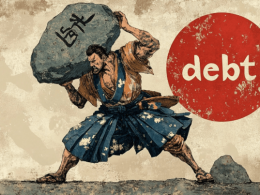Consumer staples: Marketperform
The consumer staples sector continues to hold its reputation as a contrarian group. When the market has gone through periods of weakness over the past several months, the staples sector has done relatively better. Conversely, when the market has rallied, the staples group has underperformed. It is this sort of performance, and the uncertainty continuing to surround the economy, that lead us to maintain our marketperform rating on the staples group.
The sector's fundamentals continue to look relatively good. Wage costs remain in control, inventories are lean and other expenses have been slashed during the past year, helping to boost margins. Additionally, the group has traditionally performed better than the consumer discretionary sector once the new-order component of the Institute for Supply Management (ISM) report rolls over, as now appears to be the case.
However, there are certainly still issues with the group. Consumers remain extremely price-aware, and pricing power in the staples sector appears limited. Fierce competition among major players also holds prices down and limits the ability of companies to expand margins and profitability.
As a result of this relatively balanced view, we are maintaining our marketperform view on the consumer staples group. Should economic uncertainty grow or our view of the recovery deteriorate, the staples group is one of the first we would consider upgrading.
Clients can see our top-rated stocks in the consumer staples sector.
Positive factors for the consumer staples sector:
- Should fears of a double-dip recession return, investors would likely return to more-defensive sectors such as staples.
- Staples retailers have aggressively cut costs and attempted to create more perceived value for consumers, which could support sales.
- Wage costs in the sector, while still growing, are leveling off.
- The ISM new orders index appears to be rolling over, which has typically resulted in the staples sector outperforming the discretionary group.
Negative factors for the consumer staples sector:
- Competition continues to accelerate and is exacerbated by the increasing emergence of Chinese production, which could potentially cause pricing power in the group to evaporate by compressing margins and squeezing earnings.
- Pricing power in the group has been declining.
- Should volatility decrease and risk tolerance increase, defensive sectors such as staples will likely underperform.
Energy: Marketperform
Energy has faced some nasty headwinds this year, but appears to be stabilizing. However, as long as investors remain concerned about the economy, there will likely be uncertainty around the economically sensitive energy group. As such, we're maintaining our marketperform rating.
To be sure, global growth continues to trend upward, which should help support performance of the group going forward. Sentiment may shift quickly due to any number of factors, and betting heavily on either side of the ledger in this sector seems foolhardy to us at this point. We remain unsure about what additional regulations may be put in place in Washington and the direction regulatory issues may take following the election. Various fees and regulations have been discussed that could dampen near-term profitability for some firms in the energy space.
From a fundamental perspective, several countries are putting austerity measures (spending cuts) into place, which could dampen economic growth, while China recently increased interest rates, though by a token amount. Additionally, crude-oil supplies remain relatively high by historic standards, making us a bit cautious about the energy complex in the near term—in our view, the price of crude may still be slightly elevated, despite its recent pullback. Conversely, several central banks have announced, or hinted at, loosening monetary policy to an even greater extent, which could help economic growth regain some upward momentum.
Longer term, we have a more positive outlook for the energy sector. Developing countries will almost certainly continue to demand more fuel and, once economies around the world start to show sustainable growth, we believe that will shore up demand again.
Clients can see our top-rated stocks in the energy sector.
Positive factors for the energy sector:
- Global uncertainties could threaten some supplies, exacerbating an already worrying situation.
- Developing nations will likely need more energy as they improve their infrastructures and modernize their economies.
- The ISM manufacturing index remains in territory depicting expansion, which could bode well for the economically sensitive energy group.
- Certain central banks are moving toward more monetary expansion, which could help to support growth.
Negative factors for the energy sector:
- Supplies could increase dramatically with a renewed commitment to exploration and technological improvements. Should oil companies step up efforts to access those supplies, oil prices could fall.
- Crude oil inventories remain relatively high.
- Costly regulations and a limit on exploration could be in the offing following the oil rig explosion and resulting oil leak in the Gulf of Mexico.
- Some international governments are starting to rein in their stimulative policies, threatening to slow the rate of growth in the global economy.













